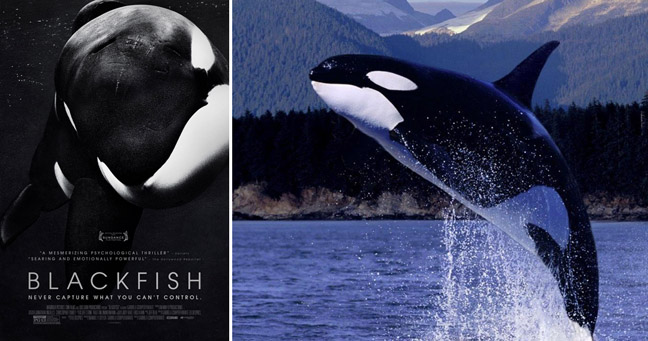The other day, classic rock band REO Speedwagon joined a growing list of musical acts that pulled-out of an upcoming concert series at SeaWorld in Orlando. The bands are protesting the theme park’s treatment of its killer whales as portrayed in the documentary film Blackfish. From what I know about orca public relations, I think SeaWorld’s got a big problem.
One morning about 20 years ago, I went to work expecting to write newsletter copy for an accounting firm client but was informed that for the next week or so, I would be on the whale team. The PR firm that employed me represented the Miami Seaquarium, and CBS News was planning on interviewing the theme park’s executives that afternoon about its killer whale and the impact of the movie Free Willy. I spent the day watching whale shows and helping prep park executives for the interview.
The messaging was straightforward. The whale had lived in captivity for 20 years and was reliant on a park-provided diet of restaurant-quality fish. If you set the orca free, the Seaquarium biologists said, there was no proof she would be able to fend for herself. Captive killer whales are well-tended-to in human care but haven’t been exposed to diseases as in the wild, so they might end up getting sick if freed. In addition, the whales were said to live longer in captivity than in the wild. Lastly, the executives asked why they would release the whale or send her away in some other manner as she was “part of the family.”
The CBS interview went well, and the hype over Free Willy eventually subsided. While detractors of parks have been hammering away at their animal practices for decades, parks such as SeaWorld have successfully portrayed their adversaries as radicals while bolstering their own images as leading marine biologists and even as conservationists. I have since visited both the Seaquarium and SeaWorld with my wife and kids. That’s gonna change.
Over the weekend, I watched Blackfish and it presents a damning case against keeping killer whales in captivity. (Miami Herald columnist Carl Hiaasen wrote a fantastic piece about the movie and expertly summarizes the film and its significance.) In my opinion, the old message points won’t work, and SeaWorld faces a tougher predicament. Blackfish packs a much bigger punch than Free Willy.
Here are some major issues that plague theme parks with killer whales:
Killer Whales are More Dangerous in Captivity
The protagonist in Blackfish is an orca named Tilikum. He’s the largest male killer whale in captivity and has killed three people: a rookie trainer who accidentally fell in his tank when he lived at a park in Canada, a drifter who snuck into his pool at SeaWorld and a veteran trainer who was dragged under and mauled during a dinner show in Orlando. Despite his criminal record, Tilikum is actually a sympathetic character as he has largely been mentally and physically abused in captivity for nearly 30 years. Watch the film and you feel bad for him. But a key point is that Tilikum has killed three people while there are no known cases of orcas killing a human in the wild.
Credibility is Spelled C-N-N
The Blackfish story is told through a series of compelling interviews with former SeaWorld trainers, who now feel the whales should be freed – along with Occupational Safety and Health Administration investigators who believe trainers should never be in the water with whales. While there are many known anti-SeaWorld activists out there, they aren’t in this film. For SeaWorld to attempt to paint the filmmakers as biased, they must attack their own former employees. It won’t work because the trainers are believable and very credible. In addition, the film is backed by CNN Films and was nominated for a Sundance Film Festival award. Blackfish oozes credibility.
Years of Misdirection Have Eroded Trust
SeaWorld, which declined to be interviewed for Blackfish, gets the typical villain treatment in the documentary. And if I was counseling them, I likely would have agreed that there was little to be gained from participating in the film. But even since the film was released and as the major bands boycotted the park, SeaWorld has offered little to increase their credibility and reputation. The film suggests that SeaWorld covered-up the true causes of two deaths involving Tilikum, and trainers who regularly jumped in the water with the whale were unaware that he had earlier killed the trainer in Canada. Blackfish also blasts SeaWorld on the topic of whale lifespan in captivity. It appears that orcas may, in fact, live longer in the wild than captivity – previously a strong message point.
What would Shamu do?
Perhaps there’s a chance that SeaWorld and the other parks with killer whales can weather this storm, but I think we will see a consistent degradation of these brands over time. Remember, Free Willy reached its peak of popularity in a time before social media. SeaWorld will face a growing number of online campaigns, and more high profile people will come out against the whale practices. And SeaWorld is now owned by a public company, SeaWorld Entertainment, Inc. (NYSE: SEAS). Previously owned by Anheuser-Busch, the company went public earlier this year. If people stop buying the stock, start asking mutual funds not to include it in their portfolios and insert the whales into every corporate conversation, it will wear on management and the investment community alike.
One viable solution will be to announce a plan to phase-out killer whale shows at SeaWorld. It might take a decade or more, but it would give SeaWorld a chance to develop new revenue streams and rebuild its shrinking credibility. No matter what: Rough seas ahead.
What do you think? Does SeaWorld have a right to do whatever it wants with its whales? Should the whales be freed? Is there a middle ground I’m not seeing?
—John
author: John P. David

